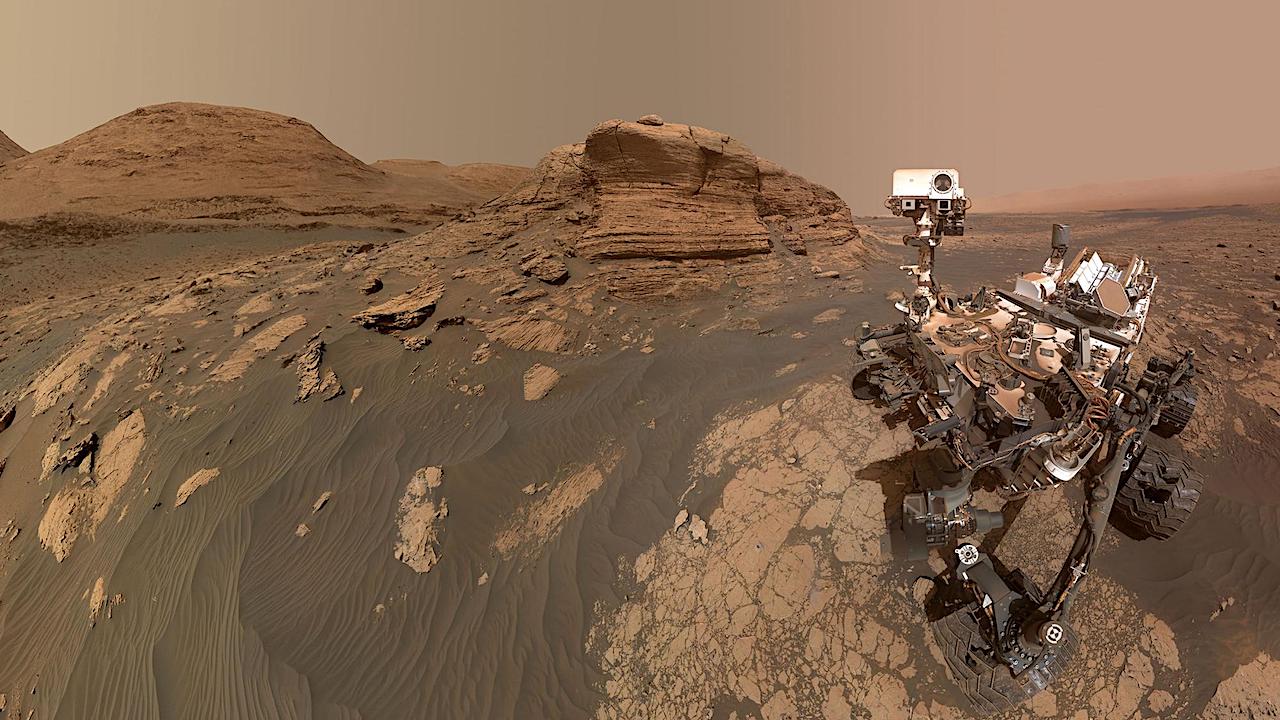Discovery of Ancient Martian Rivers Supports Existence of Life

October 24, 2023
The following article has undergone an extensive review according to the editorial guidelines and policies of Science X. Several features have been thoroughly checked to ensure the credibility of the content:
- fact-checked
- peer-reviewed publication
- trusted source
- proofread
by Adrienne Berard, Pennsylvania State University
Recent data analysis from the Curiosity rover indicates many of today's Martian craters could have been habitable rivers long ago.
'Evidence is increasingly suggesting that Mars was likely a planet rich in rivers,' said Benjamin Cardenas, assistant professor of geosciences at Penn State and lead author of a paper on this discovery. 'Signs of this are prevalent across the planet.'
A research study in Geophysical Research Letters used numerical simulations to study millennia-old Martian erosion, leading to the conclusion that common crater formations, specifically bench-and-nose landforms, might be relics of ancient riverbeds.
The research is the first of its kind to document the erosion of ancient Martian ground by using a computer model trained on combined data from satellites, Curiosity images, and 3D scans of underlying strata from the Gulf of Mexico seabed. This led to a fresh interpretation of familiar Martian crater formations, which had not been linked to river erosion until now.
'Our comprehension of Mars could be significantly enriched by interpreting how these river remnants correlate to rock layering,' Cardenas said. 'Our data goes beyond a mere snapshot. It shows an active geological past on Mars, rather than a static landscape.'
Earlier investigations into satellite data from Mars identified potential ancient river deposits in landforms called fluvial ridges. However, the researchers identified river deposit signs in the Gale crater not related to fluvial ridges but to the bench-and-nose forms not previously connected to such deposits.
'This could mean there are untapped river deposits across Mars. A greater part of Mars' sedimentary record could point to rivers as agents of formation during a life-supporting phase in Martian history,' Cardenas said. 'Earth's river corridors are synonymous with life and vital cycles of chemicals, nutrients, and sediments. Everything here suggests the Martian rivers bore similar characteristics.'
The research team devised their computer model based on decade-old Earth strata scans, a novel application of this data. Cardenas explained that these scans provided a perfect comparison to Martian landscapes.
The 3D scans of Earth's strata, used to stimulate Martian-like erosion, created landscapes bearing topographic benches and noses, unlike the expected fluvial ridges. The simulation's outcome closely matched the landforms Curiosity documented in the Gale crater.
'Our study suggests many more rivers might've existed on Mars than estimated earlier, which is promising for potential life,' Cardenas said. 'We're looking at a Mars where a significant portion once harbored life-sustaining conditions.'
The article appears in the journal Geophysical Research Letters
Source: Pennsylvania State University




